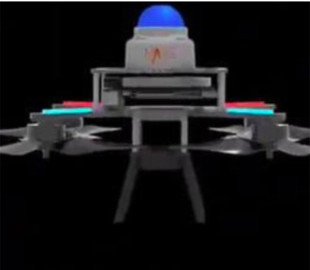
The SUPER drone uses lightweight 3D lidar to accurately detect obstacles at long distances and generates safe high-speed flight paths based on point clouds.
Engineers from the University of Hong Kong have developed a drone designed for high-speed navigation in critical conditions. Interesting Engineering writes about this.
The model, called SUPER, combines an advanced perception system and control algorithms based on artificial intelligence (AI).
SUPER is equipped with a lightweight 3D LiDAR sensor for accurate detection of obstacles at long distances. To ensure safe high-speed flight, it uses an efficient planning structure that generates trajectories directly from LiDAR point clouds.
According to the scientists, each replanning cycle generated two trajectories: one for safety in known free spaces and one for speed in all spaces. This approach reduced the failure rate by a factor of 35.9, halved the planning time, and allowed SUPER to fly at speeds of over 20 m/s while avoiding obstacles and narrow spaces.
SUPER uses 3D LiDAR for high-speed micronavigation of aircraft, outperforming vision-based systems in range, accuracy, and reliability in low-light conditions. Traditional LiDAR-equipped drones have been large, heavy, and slow due to bulky, expensive sensors.
The aerial robot overcomes these issues with a compact design with a high thrust-to-weight ratio and the lightweight Livox MID360 LIiDAR.
Unlike previous methods that relied on resource-intensive occupancy grid maps, SUPER efficiently processes LiDAR point clouds to highlight vacant spaces, reducing mapping times to 1-5 milliseconds.
It also optimizes trajectory planning using gradient methods instead of slow mixed-integer quadratic programming, achieving higher success rates. SUPER's dual-path approach improves safety by maintaining a backup path while dynamically optimizing switching times.
Speaking of future developments, the researchers emphasize that smaller, lighter LiDAR sensors with longer ranges could improve SUPER's maneuverability, speed, and ability to navigate in confined spaces. Improved aerodynamics and motion prediction will further enhance efficiency.

